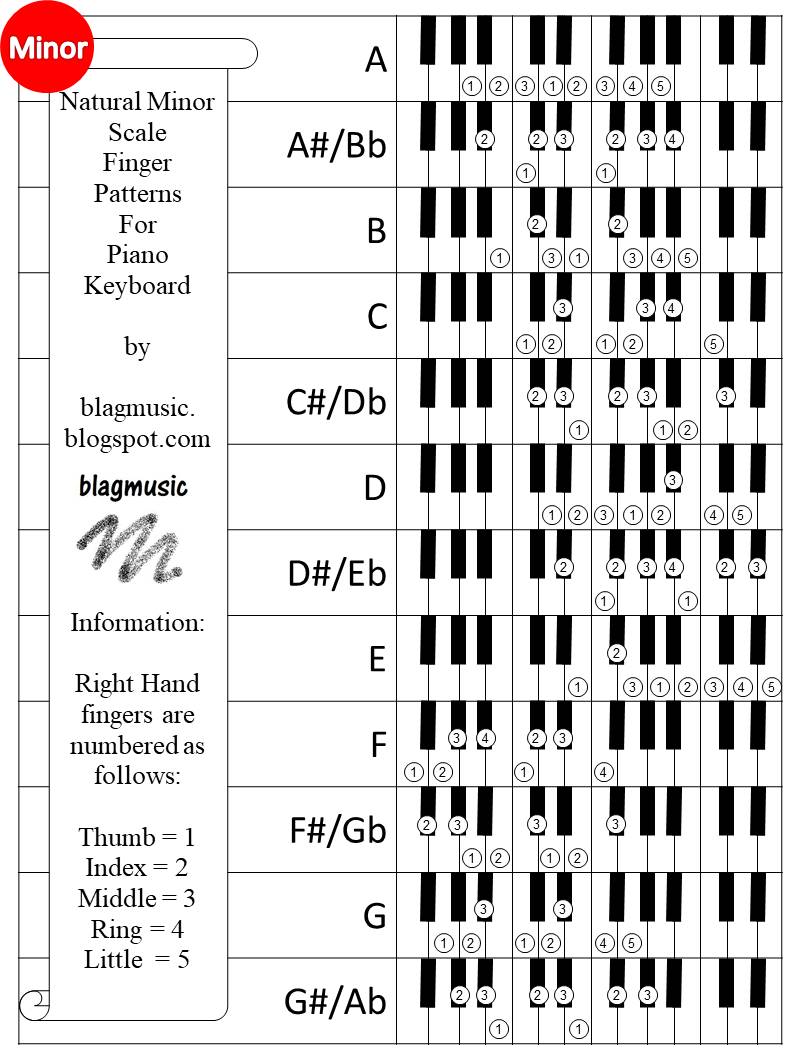

The above table is useful for displaying all the chords inside minor keys, but by re-arranging the table, we can get more information from it. We talked about this problem before with finding middle C on guitar.Īnyway, let’s get back to the minor scale… Chords in All Minor Keys – Circle of Fifths This is another example of a lack of consensus, with multiple systems being used to refer to the same concept. If you want to use a different system that is fine – the important thing is to pick a system and stick to it. It doesn’t really matter which system you use, aslong as you understand which system is being used and what the symbols are referring to. Under this system, they are assuming you know the tonality and scale degree of each chord. To further confuse matters, you may see some people (for example, books by Walter Piston or William Caplin) refer to these chords as the following: I II III IV V VI VII You may see some people refer to the chords in the minor scale like this: i ii˚ III iv v VI VIIĪs they are assuming that the scale degrees we are using are from the minor scale. This system works by comparing scale degrees to the major scale. I like to use this system as it refers directly the scale degree that is being used. I have referred to minor chords, using numerals as: i ii˚ bIII iv v bVI bVII If we take the above table and apply it to all minor keys, we can find all the possible chords from all minor keys:
A minor scale how to#
In this article, we’ll look at how to harmonise the minor scale to get these chords, different minor scale chord progressions and some examples in different minor keys on guitar.

If we harmonise the natural minor scale, we get the following chords: i (minor), ii˚ (diminished), bIII (major), iv (minor), v (minor), bVI (major) and bVII (major): Scale Degree See examples of movable minor scale guitar shapes here: Harmonic Minor Scale Guitar, Jazz Minor Scale.When we talk about chords in minor scales, we are usually thinking about chords from the natural minor scale (sometimes called the Aeolian mode).

This way, you only have to learn the fingering for one major scale in order to play them all, by playing the same shape in different positions on the fingerboard. You can use movable guitar scale shapes to play A minor scales on guitar. You can read more about this scale here: Jazz Minor Scale. This type of scale is also (and more commonly) called a ‘jazz minor scale’ or ‘jazz melodic minor scale. Nowadays, it is becoming common (particularly amongst jazz musicians) to call a major scale with a flattened third a melodic minor scale. A harmonic scales contain the following notes:Ī, B, C, D, E, F, G#, A A Harmonic Minor Scale Guitar Tab A Harmonic Minor Scale Guitar - 2 Octave TAB A Melodic Minor GuitarĪ traditional A melodic minor scale is the same as the natural minor scale, but with the sixth and seventh notes (F and G) being sharpened when the scale is ascending (it is the same as a natural minor when descending). A Harmonic Minor Guitar TabĪ harmonic minor scales differ from the natural minor by having a raised seventh note – G sharp. Read more about modal scales here: Guitar Modes. Natural minor scales are widely used in improvisation, and are also known as Aeolian modal scales. A Natural Minor Scale Guitar TAB - 2 Octave Two ways of playing the A natural minor scale on guitar are shown below: A Natural Minor Scale Guitar A Natural Minor GuitarĪn A natural minor scale contains the following notes: All three are widely used in improvisation, with each having their own sound and uses. There are three main types of minor scale: the natural minor, harmonic minor and melodic minor.


 0 kommentar(er)
0 kommentar(er)
